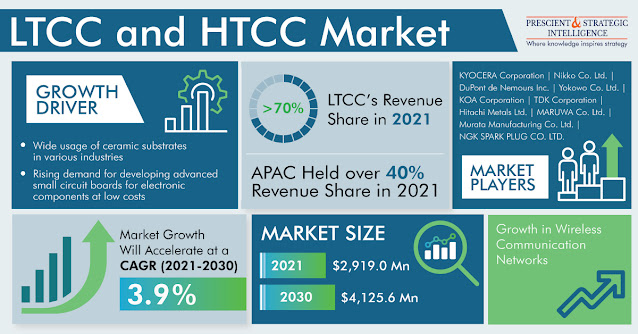The estimated revenue of the global refractories market was $27.8 billion in 2021. The expected CAGR for the industry from 2021 to 2030 is 4.7%, with which the market size will reach $42.2 billion in 2030. Refractories are natural and synthetic materials, including non-metallic materials or combinations of compounds and minerals, such as bauxite, chromite, fireclays, zirconia, and silicon carbide. They are used to line the surfaces of furnaces, which are widely used in the metallurgy sector for casting, sintering, and smelting.
The primary driver for the global refractories market is infrastructure development, increasing usage of non-ferrous materials, and growing glass industry. Refractories are primarily used for furnace linings and other applications due to their thermomechanical properties and resistance to high temperatures. They can tolerate temperatures ranging from 500 °F to 3,326 °F, which is higher than most other elements’ melting points. The melting temperature of pure refractory materials usually ranges from 3,300 °F to 6,000 °F.
 |
| To learn more about this report: https://bit.ly/3OxRB3x |
The largest refractories market share was held by bricks and shapes, of 60%, under the form segment, owing to the high demand for this form in the metal and non-metal industries. The insulation layer within the ovens and kilns is built of refractory bricks. It has to be replaced regularly depending on the insulation requirements of customers, which is why bricks hold the most-significant proportion of the market. Refractory bricks are made of ceramic material and possess various properties, such as strong insulation and heat resistance.
The largest refractories market is APAC, accounting for $17 billion in 2021. The World Steel Association reports that APAC accounts for 70% of the worldwide steel output, with China alone responsible for around 50% of the production. It produced over 1,000 million tons of crude steel and more than 1,300 million tons of steel products in 2020. Moreover, the steel industry in India is driven by the domestic availability of raw materials (iron ore) and cost-effective labor. One of the most-significant factors behind the dominance of APAC on the global market is the growing non-ferrous metal industries.
Therefore, the need for heat resistance is the major driving factor for the surge in the demand for refractory materials across industries.













